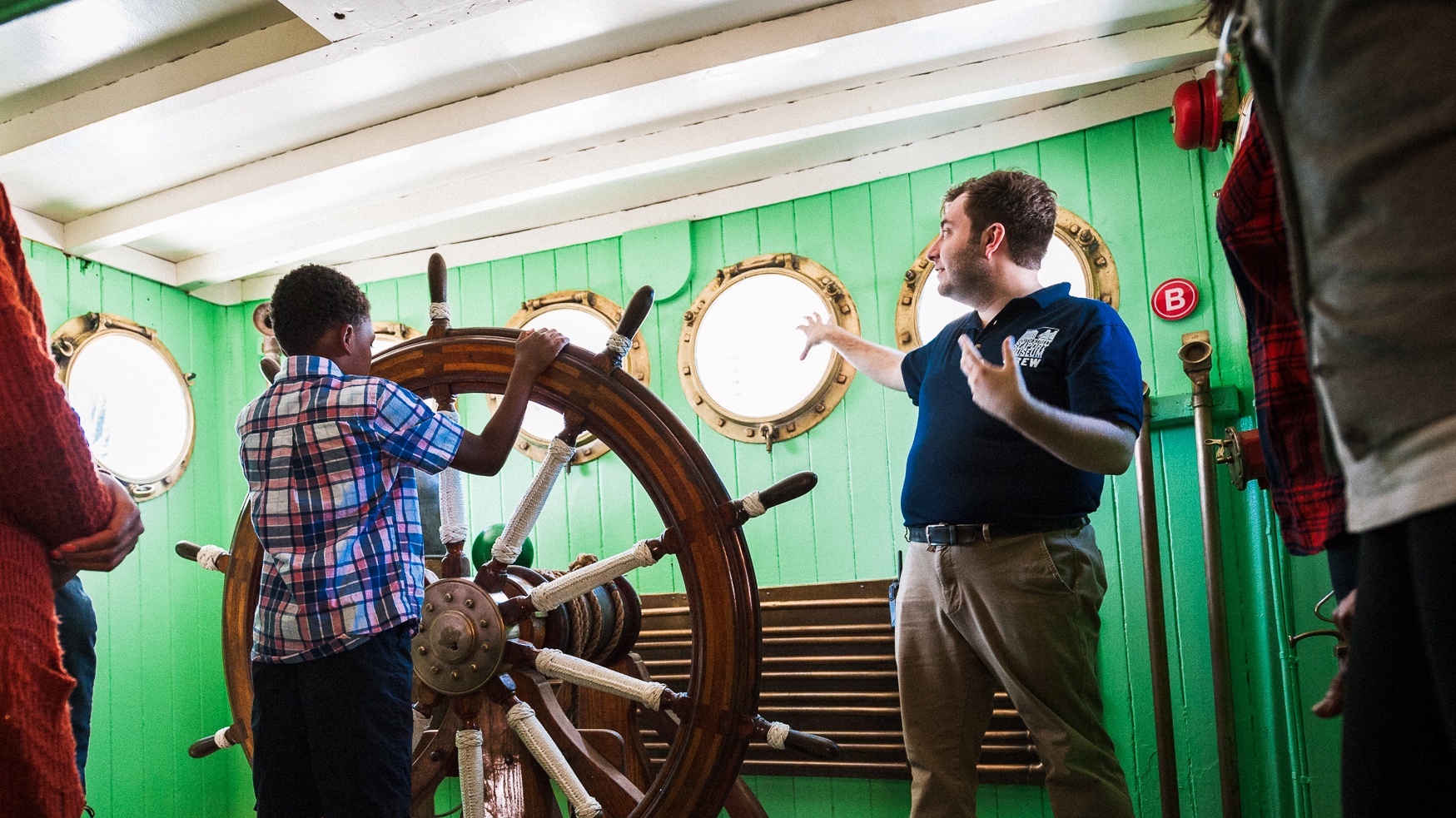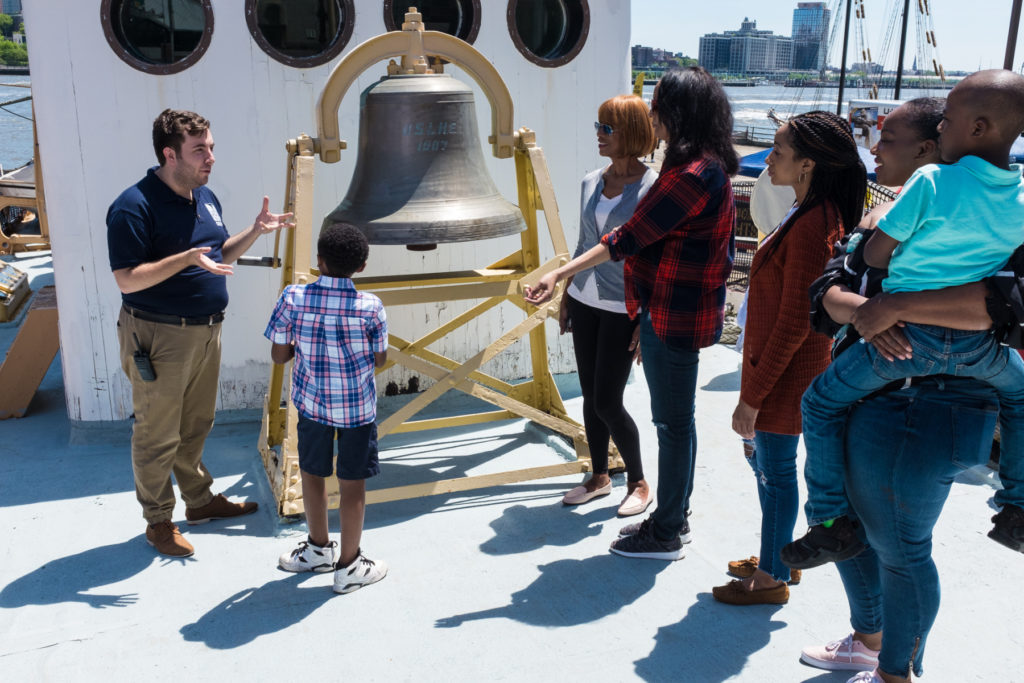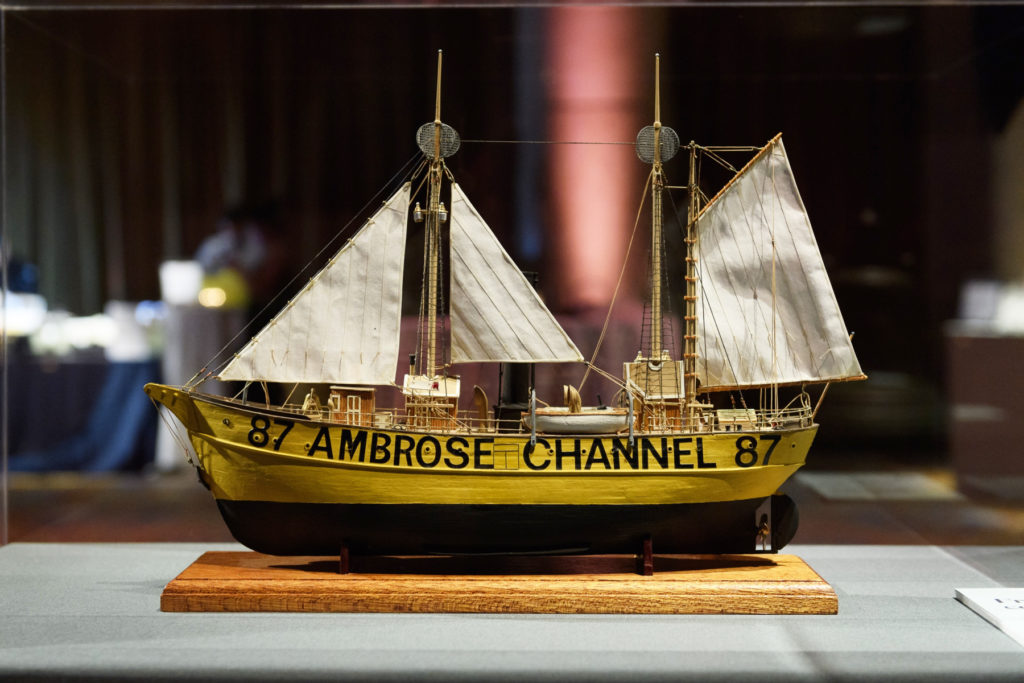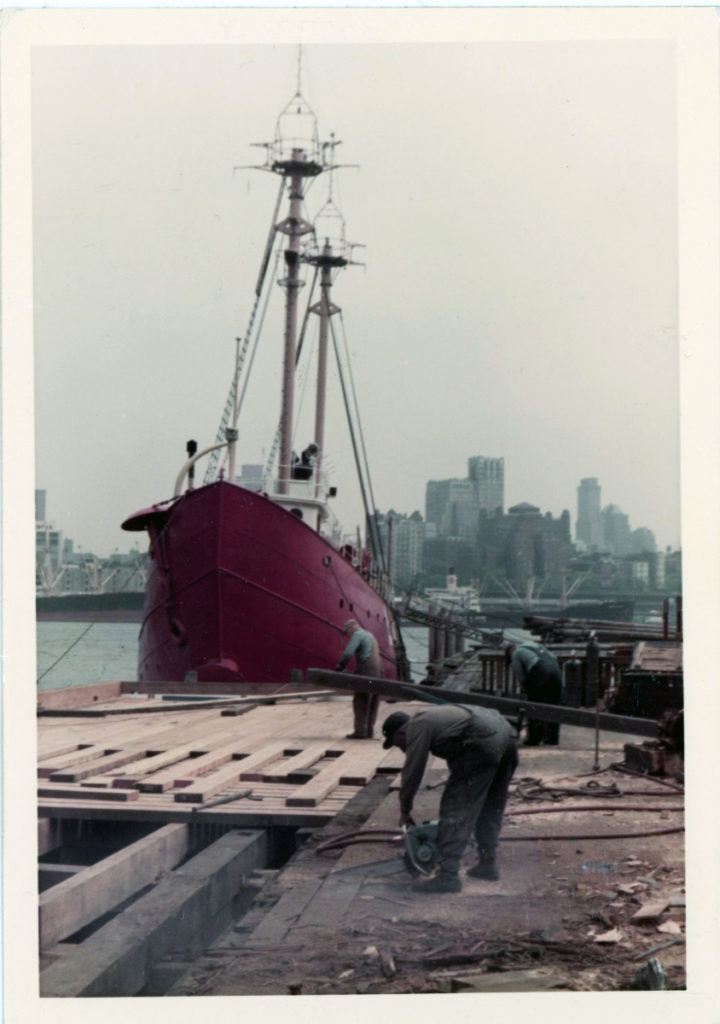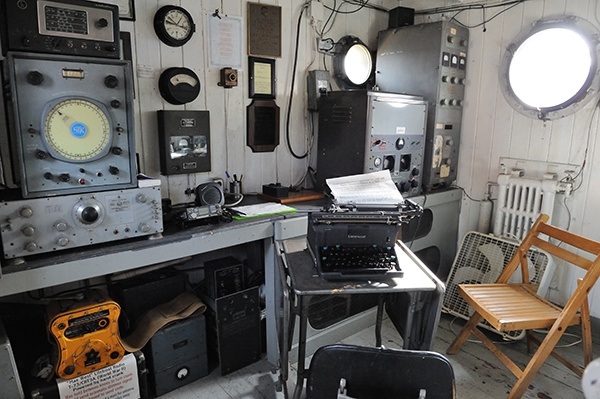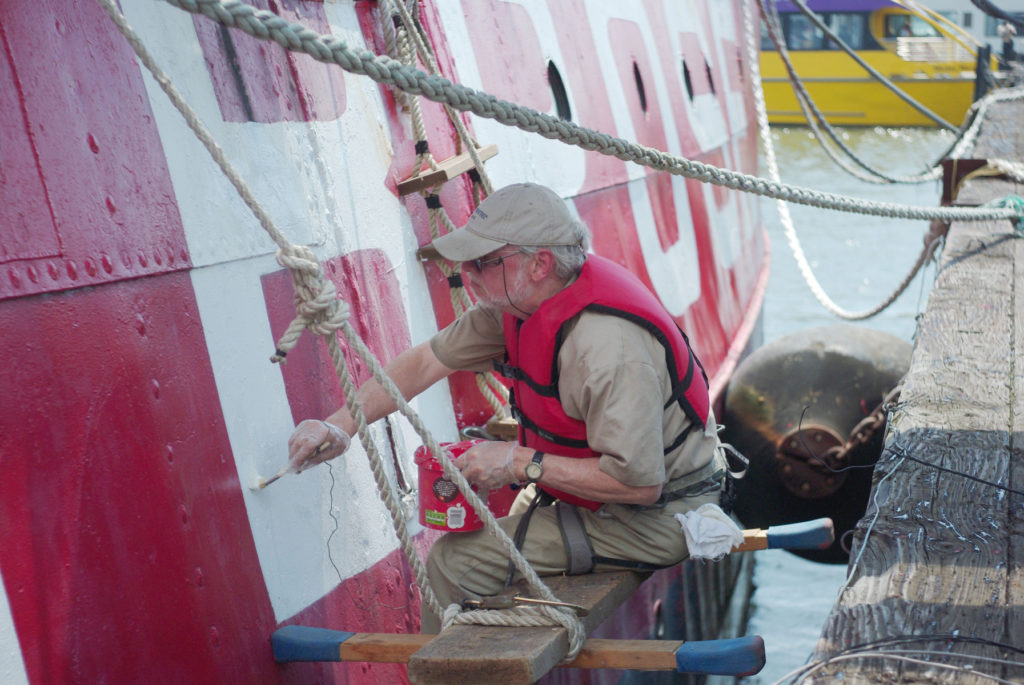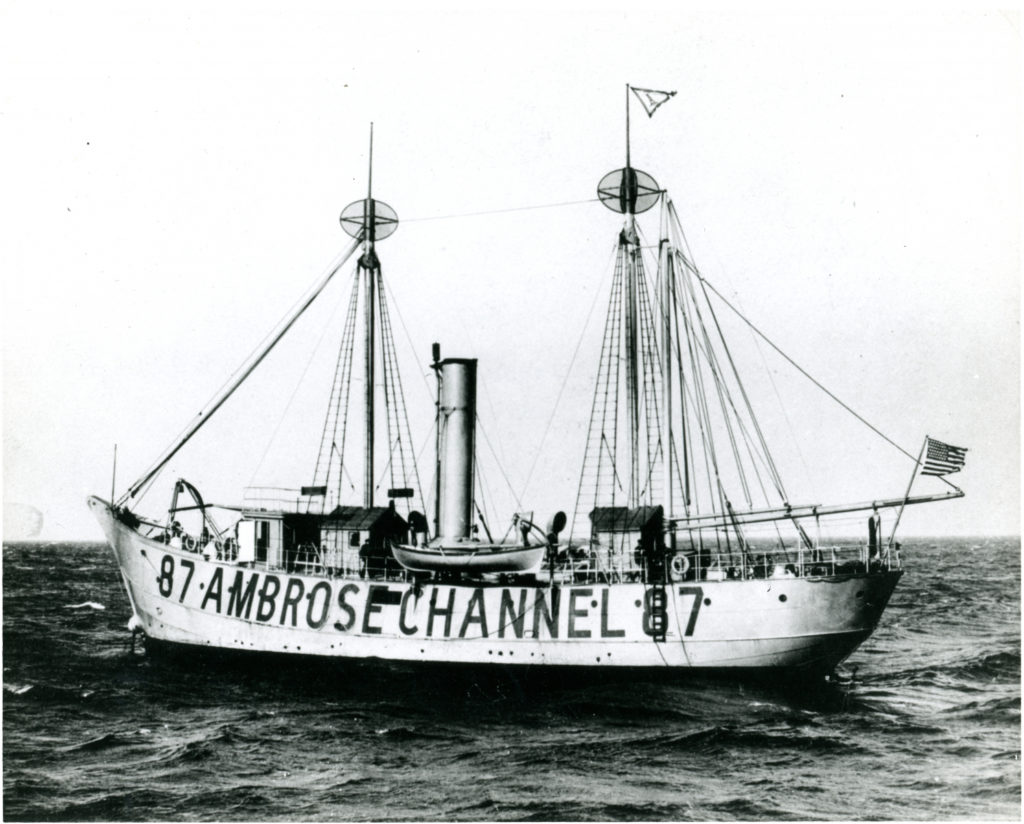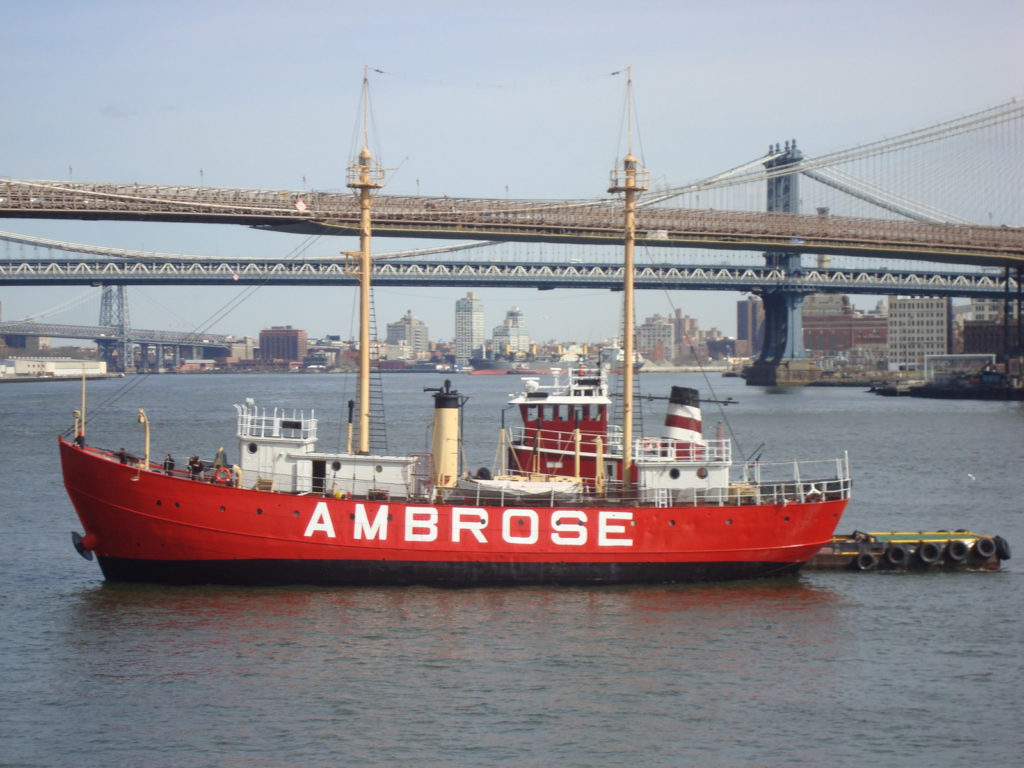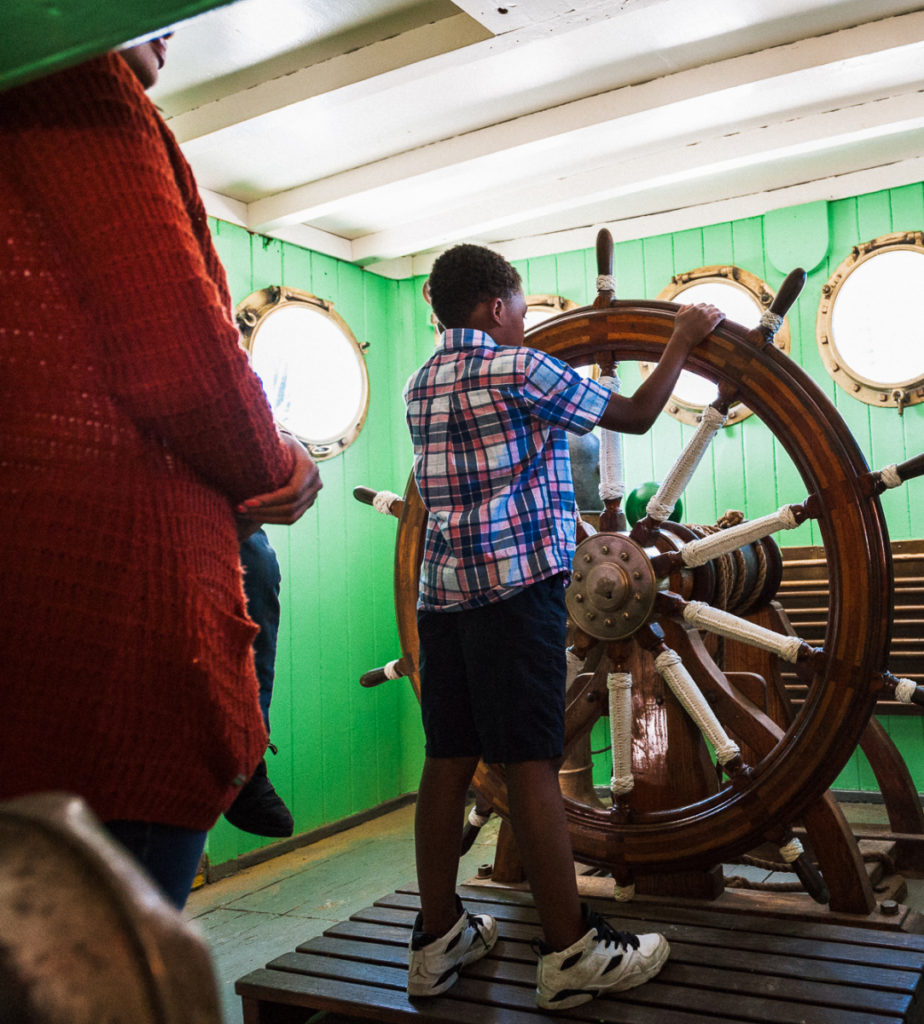Guided Tours | Wednesday–Sunday | 11:30am–3:30pm | Pier 16 | Included in Admission
As you walk multiple decks of this National Historic Landmark you will see the living and working spaces once inhabited by sailors stationed on Ambrose, as well as the special features that allow the ship to fulfill its mission of staying on station, being seen, and being heard. This ship was the first vessel to join the Seaport Museum’s fleet and the very first lightship to guard the largest shipping channel in and out of the ports of New York and New Jersey—the Ambrose Channel.
On your guided tour you will learn how Ambrose played a significant role in the immigrant experience and hear how countless waves of immigrants brought with them diverse cultures, traditions, and skills that interwove to form the rich tapestry of the city’s identity.
About Tour Registration
Tours are led multiple times per day and last approximately 45 minutes. No need to select a time slot—just check with Museum staff upon arrival to join the next available tour.
Guests must check in at the red tent located at the bottom of the Wavertree gangway on Pier 16, or in the introduction galleries at 12 Fulton Street. Please note that storage space is not available on board Ambrose. Strollers can be parked at the base of the Wavertree gangway before your tour. Access to Ambrose requires walking up an angled gangway and up and down stairs to each deck while on board.
About the 1908 Lightship Ambrose
Lightship LV-87, also known as Ambrose, was built in 1907 as a floating lighthouse to guide ships safely from the Atlantic Ocean into the Lower New York Bay. Occupying her station from 1908–1932, she guided mariners to the nation’s busiest port, and welcomed over six million immigrants into New York Harbor. At the Seaport Museum, Ambrose vividly recounts the story of sailors who worked and lived aboard historic lightships, shedding light on the vital role it played in shaping the development of New York as a bustling global city. LV-87 is listed on the National Register of Historic Places and a National Historic Landmark. In addition, the vessel highlights the significant influence of the immigrant experience on the city’s growth. As countless waves of immigrants arrived in New York seeking better opportunities, they brought with them diverse cultures, traditions, and skills that interwove to form the rich tapestry of the city’s identity—the very foundation of “Where New York Begins.
Want to learn more about Museum admission tickets? Visit the FAQ page for more details.
South Street Seaport Museum
By subway: Take the A, C, 2, 3, J, Z, 4, or 5 train to Fulton Street.
By bus: Take the M-15 SBS or M-15 to Fulton Street.
By water: The NYC Ferry, and New York Waterway provide service to Pier 11. The Staten Island Ferry provides services to Whitehall Terminal.
Parking: Parking lots can be found at Front and John Streets, as well as 294 Pearl Street.
